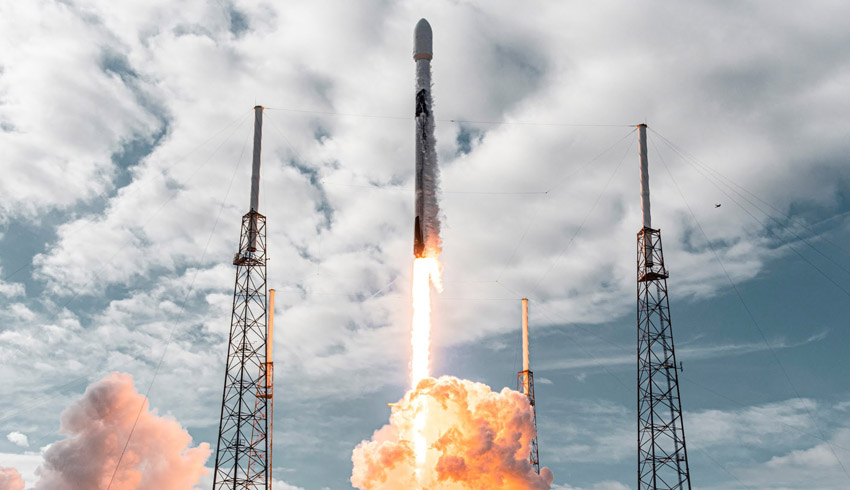
On 17 June at 12:09pm EDT, the spacecraft launched from Space Launch Complex 40 at Cape Canaveral Space Force Station in Florida.
This was Falcon 9’s second launch and landing, previously used to boost the launch of the USSF’s GPS III Vehicle 04 in November.
Nine minutes after stage separation, Falcon 9’s first stage successfully landed on the ‘Just Read the Instructions’ drone ship in the Atlantic Ocean.
Watch the take-off at SpaceX’s Twitter: https://twitter.com/SpaceX/status/1405560831790649345
"What a beautiful view of the first stage landing," Youmei Zhou, a SpaceX propulsion engineer, said during the company's live launch commentary.
The GPS, formally known as Global Positioning System, created by the US Air Force, is a “constellation of orbiting satellites that provide precise position, navigation, and timing data to military and civilian users globally”, said Zhou.
The GPS mission is to further the USSF’s ability to “provide mission critical global access for assistance and awareness for national security”.
Zhou noted that if you have ever used your phone’s mapping service or pin dropping service, then you have used the satellite launched.
The countdown lasted one minute and three seconds, while the launch, landing and deployment took one hour, 29 minutes and 20 seconds in total.
The US Department of Defense has delegated SpaceX with five of the six GPS III satellite contracts, together estimated at US$469.8 million.
The remaining contract, GPS III SVO2, was awarded to rival United Launch Alliance, a joint venture of Boeing and Lockheed Martin.
Thursday marked the fourth GPS satellite mission from SpaceX for the USSF.
The GPS III SVO5 is compatible with international global navigation satellite systems and will allow users the ability to receive signals from any country’s satellites. This increases chances of accurate signals, no matter where received, according to Everyday Astronaut.
The satellite itself is a medium-Earth orbit constellation and provides coverage for geolocation and time to the world. Currently, there are 31 active satellites in orbit.
The Falcon 9 is one of SpaceX’s rocket boosters, however, unlike others, the reusability component allows the expensive aspects of the rocket to re-fly, saving roughly US$64 million in resource costs.
NASA beat the USSF to utilising this technology when it flew its first crewed mission earlier this year with a reusable rocket to the International Space Station.
Thursday also marked the 19th launch this year so far for the USSF.

Isabella Richards
Bella Richards is a journalist who has written for several local newspapers, her university newspaper and a tech magazine, and completed her Bachelor of Communications (Journalism) at the University of Technology Sydney in 2020. She joined Momentum Media in 2021, and has since written breaking news stories across Space Connect, Australian Aviation and World of Aviation.
You can email Bella on: [email protected]
Receive the latest developments and updates on Australia’s space industry direct to your inbox. Subscribe today to Space Connect here.









